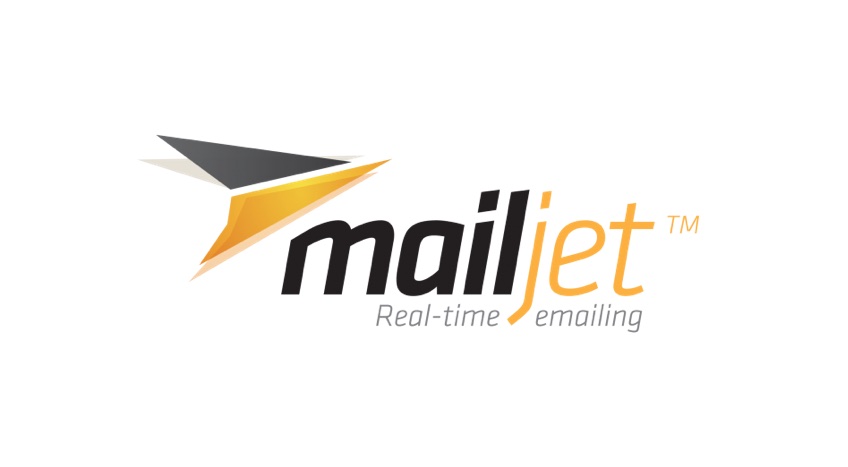Welcome to a comprehensive and insightful exploration of two leading email marketing tools: HubSpot and Mailjet. As 2024 unfolds, the digital marketing landscape continues to evolve, and email marketing remains a cornerstone of effective communication strategies. Whether you’re a seasoned marketer, a business owner, or someone just stepping into the digital marketing realm, the tool you choose can significantly impact your success. So, let’s dive in and dissect these platforms, examining their features, usability, and overall value to help you make an informed decision.
| HubSpot Email Marketing | Mailjet |
|---|---|
 |  |
| G2 Score – 4.4 out of 5 stars | G2 Score – 4.0 out of 5 stars |
| TrustRadius Score – 8.5 out of 10 | TrustRadius Score – 7.9 out of 10 |
User Interface and Experience: The Gateway to Efficiency
Navigating HubSpot: A User’s Perspective
HubSpot greets its users with a dashboard that’s both visually appealing and functionally intuitive. The design is clean and uncluttered, which is a relief, especially for beginners or those who are not tech-savvy. Every feature is meticulously organized, allowing for easy navigation and a smooth user journey. This attention to user experience is evident throughout the platform, making every task, from creating an email campaign to analyzing data, a streamlined process.
Creating an email campaign in HubSpot feels like a guided journey. The process is straightforward – you choose your audience, design your email with user-friendly tools, and set your sending options. It’s this simplicity and guidance that make HubSpot a favorite for many users, especially those who appreciate a bit of hand-holding in their marketing endeavors.
The Mailjet Experience: Clarity in Action
Mailjet takes a slightly different approach. Its interface is centered around functionality and efficiency. The design is straightforward, with a focus on getting you to your end goal without unnecessary distractions. This clarity is particularly beneficial when you’re working against the clock or managing multiple campaigns simultaneously.
With Mailjet, setting up an email campaign is like piecing together a well-designed puzzle. The platform offers a robust drag-and-drop editor that simplifies the process of crafting emails. This feature is particularly handy for those who want to create visually appealing emails without diving into the complexities of design software.
Comparing the User Interfaces
When it comes to user interfaces, both HubSpot and Mailjet shine in their unique ways. HubSpot offers a more guided, story-like experience which is fantastic for beginners or those who prefer more structure. Mailjet, with its focus on functionality and efficiency, appeals to those who value a straightforward, no-nonsense approach. The choice between HubSpot and Mailjet in terms of user interface and experience depends largely on personal preference and working style. Both platforms offer excellent user experiences, but they cater to different user needs and approaches to email marketing.
Feature Set: The Core of Email Marketing Tools
When selecting the right email marketing tool, the range and depth of features are paramount. Let’s compare how HubSpot and Mailjet equip you with the tools necessary for effective email marketing campaigns.
HubSpot: A Comprehensive Marketing Suite
HubSpot is more than just an email marketing platform; it’s a comprehensive marketing suite. This means you get access to a wide array of features beyond email, including CRM integration, content management, social media tools, and more. This holistic approach allows for a more integrated marketing strategy, where email campaigns can be seamlessly tied with other marketing efforts.
The strength of HubSpot lies in its ability to offer deep personalization. Thanks to its robust CRM capabilities, you can segment your audience with great precision, ensuring that your emails hit the mark every time. It’s about sending the right message to the right person at the right time, increasing the relevance and impact of your communications.
Analytics in HubSpot is another area where it excels. The platform provides comprehensive insights into the performance of your email campaigns, allowing you to make data-driven decisions. This feature is invaluable for refining your approach and enhancing the effectiveness of your future campaigns.
Mailjet: Specialized and Streamlined for Email Marketing
Mailjet, in contrast to HubSpot, focuses primarily on email marketing. This specialization is evident in its design, which emphasizes ease of use and effectiveness in email campaign management. For those who are looking for a tool specifically tailored to email marketing, Mailjet offers a compelling option.
The platform shines with its intuitive email design tools, particularly its drag-and-drop editor, which makes creating visually appealing emails a breeze. Additionally, Mailjet places a strong emphasis on responsive design, ensuring that emails look great on any device, a critical factor in today’s mobile-first world.
Mailjet also offers robust automation features, enabling you to set up email sequences triggered by subscriber actions or set time intervals. This automation is crucial for maintaining consistent engagement with your audience, while also saving time and resources.
The Verdict on Features
In the feature comparison, HubSpot offers a more holistic marketing approach with its wide range of integrated tools and deep personalization capabilities, ideal for businesses looking for an all-encompassing marketing solution. Mailjet, with its focus on email marketing, provides a more streamlined experience, perfect for those who want a dedicated email marketing tool that’s easy to use and efficient.
Customer Support and Resource Availability: The Backbone of User Experience
Effective customer support and accessible resources are crucial in maximizing the potential of any email marketing tool. Let’s examine how HubSpot and Mailjet support their users through these services.
HubSpot: A Repository of Knowledge and Support
HubSpot is renowned for its extensive customer support system. They offer 24/7 support through various channels, including phone, email, and live chat. This round-the-clock availability ensures that help is always on hand, regardless of your timezone or schedule.
Beyond direct support, HubSpot provides an impressive array of educational resources. Their knowledge base is packed with articles, guides, tutorials, and FAQs. HubSpot Academy, their online learning platform, offers free courses and certifications in various aspects of digital marketing. These resources are invaluable not just for using HubSpot effectively, but also for broadening your overall marketing expertise.
Mailjet: Focused and Efficient User Support
Mailjet may not match the breadth of HubSpot’s support system, but they excel in providing focused and efficient support. Their team is known for being responsive and helpful, addressing issues quickly and effectively. Support is accessible via email and live chat, ensuring users get the help they need without much delay.
Mailjet also offers a variety of online resources, including a comprehensive knowledge base, how-to guides, and a blog that covers the latest trends and best practices in email marketing. These resources are particularly tailored to help users get the most out of their email marketing efforts.
The Verdict on Customer Support and Resources
When it comes to customer support and resources, both HubSpot and Mailjet offer strong support, but in different ways. HubSpot provides a broader range of resources and learning opportunities, making it an excellent choice for those who seek extensive learning and support. Mailjet, with its focused and efficient support system, is great for users who prefer straightforward, direct assistance tailored specifically to email marketing.
Pricing and Affordability: Balancing Cost with Benefits
In the world of email marketing tools, pricing is a crucial factor that can influence your choice. Let’s compare how HubSpot and Mailjet stack up in terms of pricing and the value they offer.
| HubSpot Email Marketing | HubSpot’s email marketing tool is part of the HubSpot Marketing Hub, which offers the following plans: Free Tools: Basic email marketing features with HubSpot branding. Starter Plan: Starting at $45/month, includes email marketing, ad management, landing pages, forms, and more. Professional Plan: Starting at $800/month, offers advanced marketing automation, smart content, and A/B testing. Enterprise Plan: Starting at $3,200/month, adds features like adaptive testing, advanced reporting, and custom event triggers. |
| Mailjet | Free Plan: Includes up to 6,000 emails per month (with a daily limit of 200) and unlimited contacts. Basic features like email creation and sending are included. Essential Plan: Starting at around $15/month for 15,000 emails per month. This plan removes the daily sending limit and includes online customer support, no Mailjet logo, and sub-accounts. Premium Plan: Starting at around $25/month for 15,000 emails per month. Includes additional features like segmentation, A/B testing, marketing automation, and multi-user collaboration. Custom Enterprise Solutions: Offers custom volume of emails with advanced features and dedicated support. Pricing is custom and based on specific requirements. |
HubSpot: Premium Services at a Premium Price
HubSpot operates on a tiered pricing system, which ranges from a basic free plan to more advanced, higher-priced options. The free version offers a taste of HubSpot’s capabilities, but the more powerful features are reserved for the paid plans. As you move up the tiers, the cost increases, but so does the functionality, including advanced CRM tools, automation, and analytics.
The pricing of HubSpot’s premium plans can be justified by the comprehensive nature of the service. It’s an all-in-one solution that encompasses various aspects of digital marketing. For businesses that need an extensive suite of tools and have the budget for it, HubSpot offers great value.
Mailjet: Affordable and Straightforward Pricing
Mailjet presents a more straightforward and generally more affordable pricing structure. They offer a free plan with basic features, which is quite generous. The paid plans are reasonably priced and are based on the volume of emails sent, making it easy to choose a plan that aligns with your usage and budget.
While Mailjet doesn’t offer the broad range of features that HubSpot does, it provides excellent value for those focused primarily on email marketing. It delivers the necessary tools for effective email campaigns without the extra cost for features that you might not need.
The Verdict on Pricing and Value
The choice between HubSpot and Mailjet in terms of pricing largely depends on your specific requirements and budget. If you need a comprehensive marketing suite and are willing to invest in it, HubSpot could be the right choice. However, if your primary focus is email marketing and you’re looking for an affordable yet effective tool, Mailjet offers a great alternative.

Related: Check out our free SEO suite

Deliverability and Performance: The Key to Email Marketing Success
The success of an email marketing campaign heavily relies on the deliverability and performance of the chosen platform. Let’s see how HubSpot and Mailjet fare in ensuring your emails effectively reach your audience.
HubSpot: High Deliverability with Advanced Features
HubSpot takes deliverability seriously, implementing advanced features to ensure your emails land in the inbox and not the spam folder. They use sophisticated algorithms and spam detection tools, alongside email authentication methods like DKIM and SPF. This dedication helps maintain a strong sender reputation, which is crucial for high deliverability rates.
The integration of HubSpot’s CRM enhances deliverability through targeted and personalized emails. By sending relevant content to segmented audiences, your emails are less likely to be marked as spam and more likely to engage your recipients, further boosting deliverability.
Mailjet: Specialized Focus on Email Performance
Mailjet, with its core focus on email marketing, places a strong emphasis on deliverability. They continuously monitor their servers and adapt to the latest email sending best practices. This vigilance helps in maintaining high deliverability rates, ensuring your messages reach their intended destination.
Mailjet offers robust tools for managing your email lists, such as features for cleaning and segmenting your audience. Effective list management contributes to better engagement rates and, consequently, improved deliverability. It’s about sending the right message to a clean and responsive list.
The Verdict on Deliverability and Performance
Both HubSpot and Mailjet are strong contenders when it comes to deliverability and performance. HubSpot’s advantage lies in its comprehensive features and CRM integration, which facilitate highly personalized and targeted emails. Mailjet’s strength is in its specialized focus on email deliverability, ensuring optimal performance through constant monitoring and effective list management.
Analytics and Reporting: Gaining Insights for Strategic Decisions
In email marketing, the ability to analyze campaign performance and glean actionable insights is crucial. Let’s compare how HubSpot and Mailjet handle analytics and reporting, key features that empower marketers to make informed decisions.
HubSpot: In-Depth Analytics for Comprehensive Understanding
HubSpot provides extensive analytics capabilities. You can dive deep into the performance of your email campaigns with metrics that go beyond opens and clicks. HubSpot tracks how your emails contribute to broader marketing goals, like lead generation and conversions. This comprehensive view is invaluable for understanding the overall impact of your email marketing efforts.
Another advantage of HubSpot is the ability to create custom reports. This feature allows you to tailor your analytics to match specific goals and KPIs. Whether it’s tracking the customer journey or measuring ROI, HubSpot’s customizable reporting adapts to your unique analytical needs.
Mailjet: Clear and Actionable Reporting
Mailjet offers a more streamlined approach to analytics. It provides all the essential metrics like open rates, click-through rates, and unsubscribe rates in an easily digestible format. This simplicity is ideal for those who need a clear and concise overview of their campaign performance without the complexity of in-depth analytics.
A notable feature of Mailjet is its real-time tracking capabilities. You can observe how your emails perform as soon as they’re sent. This immediacy allows for quick adjustments, enabling you to optimize your campaigns efficiently and responsively.
The Verdict on Analytics and Reporting
In terms of analytics and reporting, the choice between HubSpot and Mailjet depends on your analytical needs. HubSpot is well-suited for those who require detailed, customizable insights, particularly useful for larger businesses or complex marketing strategies. Mailjet, with its straightforward, real-time analytics, is ideal for users who prefer an easy-to-understand and quick overview of their email campaign’s performance.
Integration Capabilities: Enhancing Email Marketing through Connectivity
In an era where digital tools are interconnected, the ability of an email marketing platform to integrate with other applications significantly amplifies its usefulness. Let’s assess how HubSpot and Mailjet perform in terms of integration capabilities.
HubSpot: A Hub for Diverse Integrations
HubSpot stands out with its vast range of integration options. It connects seamlessly with a plethora of other tools and platforms, including CRM systems, e-commerce platforms, social media networks, and many more. This extensive integration ecosystem enables a unified data flow across various business functions, enhancing overall marketing efficiency and effectiveness.
A key highlight of HubSpot is its native integration with its own CRM system. This seamless connection provides a holistic view of customer interactions, enriching your email marketing strategies with deeper insights and personalized engagement.
Mailjet: Strategic and Streamlined Integrations
While Mailjet might not boast as extensive an array of integrations as HubSpot, it offers strategic partnerships with essential tools and services. These integrations are meticulously chosen to complement and enhance the core functionalities of email marketing, ensuring you have all the necessary tools for a successful campaign.
Mailjet places emphasis on the ease of integrating with other tools. The process is designed to be user-friendly, often requiring just a few clicks to set up. This approach makes it accessible even to those who might not be tech-savvy, bridging the gap between various digital tools and email marketing.
The Verdict on Integration Capabilities
When it comes to integrations, HubSpot is the clear leader with its wider and more diverse range of options, ideal for businesses seeking an all-encompassing marketing platform. Mailjet, on the other hand, offers essential integrations that are more focused and streamlined, catering specifically to enhancing the email marketing experience.
Conclusion
In summary, HubSpot and Mailjet both offer compelling features for email marketing, but they cater to distinct needs. HubSpot stands as a comprehensive marketing suite, ideal for businesses seeking an all-in-one solution with extensive features, including CRM integration, advanced personalization, and a wide range of integrations. Its in-depth analytics and customizable reporting make it a fit for larger organizations or those with complex marketing strategies.
Mailjet, with its focus on email marketing, excels in providing a user-friendly, efficient experience. It’s perfect for small to medium-sized businesses or those primarily concerned with email marketing. Mailjet offers straightforward analytics, real-time tracking, and strategic integrations, all at a more affordable price point. Ultimately, the decision between HubSpot and Mailjet depends on your specific business needs, scale of operations, and budget. Both platforms are capable, but the best choice aligns with your marketing goals and organizational requirements in 2024.
Read Next
- Campaign Monitor vs MailerLite: The Best Email Marketing Tool for 2024
- Campaign Monitor vs HubSpot Email Marketing: The Best Email Marketing Tool for 2024
- ConvertKit vs ReachMail: The Best Email Marketing Tool for 2024
- ConvertKit vs SalesHandy: The Best Email Marketing Tool for 2024
- ConvertKit vs Stripo: The Best Email Marketing Tool for 2024






















Comments are closed.